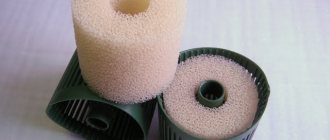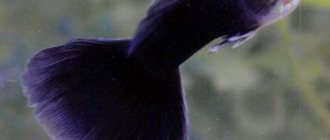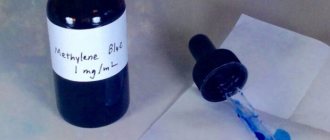If you keep an aquarium at home, then you probably know how difficult it can be to keep your fish house in good condition. This is especially true for already old or damaged aquariums, which can easily become broken.
The cause of the leak can be anything, but in any case the problem lies in the sealant that glues the glass walls together. Over time, it can lose its properties and begin to crumble, which leads to a leak in the aquarium. Sometimes the owners themselves break this tightness when they scrape off algae in the same place in the aquarium.
However, container damage is easy to fix, and if desired, this can be done even at home.
How to fix a leak
To do this, you need:
- Lower the water level below the leak. Remove the filter and other interfering elements.
- Find the corner where the water is leaking and use a blade to cut off the old sealant from this place.
- Degrease the leak area with acetone or alcohol from the outside.
WARNING: Do not perform this procedure on the inside of the glass as you are working with toxic liquids. If they subsequently end up in the water with the fish, it will harm your inhabitants.
- Dry the treated area and apply a layer of special sealant to it.
- After 24 hours, when the silicone has gone through the vulcanization stage, carefully clean the seam.
- Now you can increase the water level.
If the leak occurs at the top of the container, you can lubricate only the damaged area. But if the sealing failure occurs at the bottom, then it is better to seal the entire aquarium.
IMPORTANT: If the aquarium is large, it is recommended to lubricate it every five years.
Materials
Before repairing the aquarium, prepare the following materials:
- Sheets of glass. You can cut the fabric that has the required parameters yourself. For these purposes, glass cutters and other available tools are used. The relevant organizations also prepare glass for aquariums.
- Sealant. Special compounds and gels are used to treat seams. When selecting, check whether the glass is compatible with the selected sealant. So, experienced aquarists use silicone.
- Solvent. Suitable for degreasing glass panels.
Glue sealant for aquarium
In the production of frameless aquariums, special silicone glue is used. When a breakdown or seal failure is repaired at home, you need to buy exactly the same glue.
It looks like a jelly-like mass that hardens when exposed to moisture in the air. 30 minutes after gluing the damaged area, the polymerization process occurs. And after only a day, the glued area is almost impossible to damage, since the seam completely interlocks the two edges of the glass and forms one common surface, similar to the original glass. This effect is achieved thanks to silicon, which is part of the silicone adhesive and the glass itself.
This glue can be purchased at some pet stores and at any construction hypermarket.
IMPORTANT: When choosing silicone glue, look on the packaging for the words: “For aquariums” or “For gluing aquariums.” This option is the best.
Brands such as Soudal, VIK Aquarium Silicone and Penosil are most optimal for your situation. These brands are safe, and the components included in the glue will not harm the fish. Also, the glassy mass can harden to the state of glass.
The best way to glue ceramics and porcelain
I would like to extend the life of ceramics. It is not only used for its intended purpose, but also decorates the interior with its originality and uniqueness. It’s hard to say which is better ceramics or porcelain in terms of quality and durability, it all depends on various factors.
How to glue porcelain and ceramics? Which glue for porcelain and ceramics should I choose? Or maybe throw away the broken product? Should I throw away the broken vase or not? If not, how to glue a ceramic vase?
Don't rush to throw it away. You can always throw it away. First you need to try to glue the product, and if nothing works, then you can throw it away. Throwing it away is the last thing left to do.
How to glue ceramics
Various adhesives are used to repair ceramics. There are a huge variety of products available on the market for repairing ceramic cookware.
Ceramic tableware
The following Russian-made adhesives for repairing ceramic tableware are offered for sale: “Second”, “Super-moment”, “Cyanopan”, “Glue”, “Sila”, “Monolith”, “Elephant”. There are also imported adhesives for gluing. The best waterproof glue for ceramics is MARS.
Waterproof glue
For ceramics that are used to store food, you can use PVA glue for gluing. But, it is recommended that after gluing the ceramic cup is covered with a layer of varnish. For gluing ceramic products, you can use epoxy glue, F-2 and BF-4 adhesives.
How to glue porcelain
The following range of adhesives for porcelain is offered for sale – STANGE, “cosmofen ca-12”, you can also use “RAPID”. Among Russian-made adhesives, carbinol glue should be noted. Also, instead of glue for repairing porcelain, you can use epoxy resin EPOXY GLUE produced by BONDO, BIZON or similar adhesives.
China
To glue porcelain, you can use cement made from gypsum. To do this, add the white of 1 egg to the gypsum powder and mix very well. The resulting glue can be used to glue porcelain. Moreover, the gluing procedure should be performed very quickly, because this glue hardens quickly.
For gluing, you can make other glue at home. To do this, mix 1 egg white and soda. Beat Belov into foam, without adding soda. The whipped white should sit for one day, and only then add soda to the settled white and mix. You should add enough soda to get a mass similar in consistency to regular dough.
Very often, food glue is recommended for repairing porcelain, which is easy to make at home.
To do this you should:
- Take 1 liter of water. Add 100 g to water. Sugar, 100 gr. lime (necessarily slaked). Place the resulting mixture on the fire and cook over low heat for about 3-3.5 hours. The main thing when “cooking” is that it does not boil.
- Cool the resulting broth and let it sit for a few more hours.
- The water that remains after settling must be drained.
- Add 0.5 kg to the mixture. tile adhesive. Mix well and leave to settle again for 10-15 hours.
- If there is excess water, it must be drained. Boil the resulting mass one more time.
- Cool. Porcelain glue is ready.
This adhesive for food utensils is ideal.
Universal adhesives for both materials
There are a huge number of universal adhesives. These are adhesives that can be used to glue both porcelain and ceramics - casein glue, epoxy adhesives. The most popular is Porcelan Potch glue. Edible glue is often suitable for gluing both ceramics and porcelain. For example, the recipe described above can be used as an adhesive for ceramics and porcelain.
Porzellan Potch glue
Gluing aquarium glass
Bonding occurs in cases where the glass is cracked. How to proceed depends on the size of the crack and its location. For example, if a breakdown occurs in the upper part of the aquarium, then the crack is sealed with silicone.
If the glass is damaged along the entire vertical, horizontal or diagonal of the container, then the repair will not tolerate delay. Here you need to work quickly, since glass with such a crack may not withstand water and burst.
To properly carry out the restoration, it is necessary to divide the entire repair process into several stages.
Stages of work
- Find the exact location of the leak. If there are no traces of cracks or chips on the glass, then take the paper and apply it to the glass. Where the water flows, the paper will immediately become damp.
- Disassemble a cracked aquarium: for a frameless one, you need to make neat cuts inside and outside in the joint area; For a frame one, you need to remove all the sealant from the gap.
- Any adhesive that became accessible after disassembly must also be removed.
- Using the template, cut out the new glass. You can order it from the workshop.
- Using silicone glue, coat all the joints of the disassembled aquarium and the ribs of the new glass.
IMPORTANT: You must carefully monitor the amount of sealant: if you see that it is not enough, then very carefully add it to the desired area.
- Secure the position with tape or another structure.
- After an hour, seal the seams again - this way you will secure the result so as not to seal the container again.
- After one day, you need to check the restored aquarium for strength. To do this, pour water into it and let it stand for 2 hours.
- You can also use paper by placing it on the joints. If the place is just as dry, then you can be congratulated on a job well done!
- If there are no problems, you can drain the temporary water, add soil, you can immediately add fertilizer and prepare the aquarium for stocking.
Common breakdowns and their causes
The weakest point of the tank, if it is not a cast ultra-small aquarium with three fish, is its joints. They are capable of leaking, which is very easy to detect, but not entirely easy to repair. This happens for several reasons:
- Poor fat-free. At the production plant, they either completely forgot to do this before gluing, or did it poorly, as a result of which the joints did not fit too tightly to each other and were not firmly sealed with silicone sealant.
- The glass cracked. Here, both identifying the location of the leak and eliminating it can become a real test even for an experienced aquarist. This happens much less frequently, but you still need to know how to deal with it, since you can get things in the room very wet due to measures not taken in time.
If there is a leak along the seam, in some cases you can get by with simply gluing the outside. For the best result, you need to do everything more carefully, remove the inhabitants, remove vegetation, disassemble the container and glue it, having previously degreased it well. In addition, you must try very hard to remove all the old glue without leaving any residue, which could interfere with the tight fit of all the edges.
In the second case, this happens due to non-compliance with the rules for operating the tank. For example, the location of a heating device near it or frequent impacts on the place that has cracked with various objects.
In addition, chips that appear may indicate improper cleaning, in which too zealous efforts were applied with a scraper.
Where to put the fish during repairs
It is obvious to assume that during repairs the fish must temporarily leave their home. But how to do that? Very simple:
- If you have another aquarium, then move them to it.
- If there is no other large container, then choose another smaller place that would accommodate your pets. If the volume allows, then you can even take an ordinary glass jar.
- It is better to pour water from the damaged aquarium into a temporary shelter.
- Be sure to remove the soil and all plants from the broken aquarium; if possible, they can also be transferred to a temporary home for the fish.
- Since fish need oxygen, provide it to them.
Repairing an aquarium at home is not a difficult task if you approach the repair process rationally. In order to accurately and effectively “patch up” a house for your fish, you just need to figure out what materials should be used and what tips to follow.
With a little patience, time and perseverance, you will save on buying a new aquarium and see for yourself that it is much easier to learn how to restore glass yourself.
Preparatory activities
Before repairing a damaged aquarium, perform the following steps:
- Relocation of phenotypes is performed before restoring leaking containers. After all, carrying out activities with a full tank is problematic.
- Vegetation, substrate, and liquid are removed from the tank. Additionally, it is washed and dried.
- Safe materials and tools are used for repairs. Specialized stores sell everything you need.
What you need to prepare before starting work
Not many people know how to glue a glass aquarium together. To do this, you need to prepare materials, glue (sealant), and perform work in certain stages. The quality of the assembly depends not only on the selected consumables, but also on the accuracy of the work.
Before starting work, you need to prepare tools and materials. The basis is glass. His choice will be discussed below. Additionally, you will need silicone in a tube and a mounting gun for applying glue. Details decorating the interior space are selected individually depending on the preferences of the owner of the apartment or house.
Third-party items that will be needed during assembly include:
- Masking tape.
- Liquid for degreasing work surfaces.
- Stationery knife.
- Level.
- Clamps.
- Square.
Don’t forget about the rags you use to wipe the gluing areas and remove any remaining glue.
Which glass to choose
Knowing how to seal an aquarium is not enough to assemble a quality product. To do this, you need to choose the right glass. Possible materials of manufacture include:
- Plexiglas - this material can be used to create different shapes due to its flexibility. The disadvantages are low strength indicators and clouding over time.
- Acrylic is a durable, flexible material. It is inferior to glass in terms of durability, it is easily scratched due to which the appearance deteriorates.
- Tempered glass is considered the best option for making structures of complex shapes. This is due to a certain strength, wear resistance, and preservation of appearance for a long time. Not really suitable for high pressure aquariums.
Crack in glass
Not all damage to an aquarium can be repaired with a sealant. So, for example, if a leak occurs due to a crack in the wall of a reservoir, then the only possible option is to replace the glass with a new one.
Otherwise, masking the problem with glue will only help for a while. Then the glass will burst.
Glue is a real assistant to every aquarist in the fight for the condition of his pond. But it is important to take a responsible and careful approach not only to the choice of the sealant itself, but also to the stages of its application. Then glue can really solve many problems.
Product examples
Silicone for aquariums is what people call products for gluing fish containers together. The most commonly used compositions:
- Tytan is a special high-quality aquarium glue produced in Poland. It provides a long-lasting seal, but is quite expensive. This is an ideal option for gluing large aquariums.
- Soudal is a glue from Belgium, specifically for assembling and repairing aquariums. Suitable for containers of any size. It is considered the best option in terms of quality.
- Krass is another Polish sealant that is more affordable. It has acceptable quality and is mainly used for gluing small containers up to 50 liters.
- Okyanys Kimya is a Turkish product that provides reliable and durable glass bonding.
- “Moment sealant” is a special silicone sealant for aquariums from the famous “Moment” series from Henkel.
Adviсe
In order to seal the joints efficiently and accurately, sealing the cracks is necessary:
- When choosing glue, read the included instructions.
- After the aquarium inhabitants return to the repaired container, the compressor operation should be increased within 2-3 days.
- When sealing the seams, you can accidentally stain the aquarium glass, so the space along the seams should be covered with tape used when painting windows.
- Having gained experience, you can carry out routine disassembly and replacement of sealant to eliminate sudden leaks.
- Make sure your fish have a spare tank in case of temporary relocation. It will be needed when the main one is cracked, as well as when diseases occur, when cleaning or spawning fish.
- To avoid breaking the seal of the vessel, use a metal scraper to remove algae with extreme caution.











